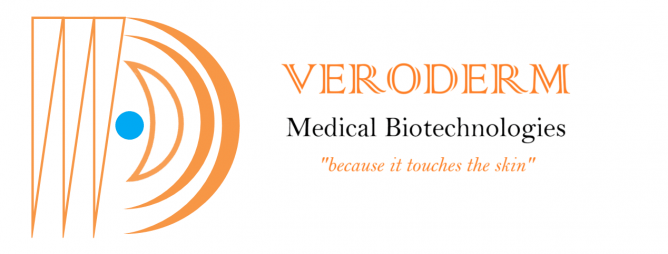Photonics

Adding Comfort and Character to Sterile Environments
Window Film Systems has been expertly outfitting healthcare facilities for the over three decades, providing solutions for real-life glass-related situations that directly affect patients and staff.
Our product and services add value to various medical industry environments by enhancing the level of comfort in a given space while adhering to unique specifications.
Our intention is to supply and install film that fits as a second skin, to regulate, transform, protect and secure the glass that not only encases your everyday surroundings but also keeps you connected to those around you.

Lowering Costs and Raising Security Levels for a Happier Home
Window Film Systems has been expertly outfitting homes and residential areas for over four decades, providing solutions for homeowners in Ontario. Our residential window film products and services add value to homes by:
- increasing protection levels with security film
- adding privacy and design with decorative window film
- reducing energy bills with solar film
Our residential film is made with quality material, so the warranty is for as long as you own your home! Our intention is to supply and install residential window film that fits as a second skin, to regulate, transform, protect and secure the glass that encases your home.
These professional mirror insulation films are somewhat shatterproof, but not primarily for shatterproofing. If you want professional anti-shattering, you need to choose professional anti-shattering film, professional anti-shattering film is transparent, there will be a professional “ball impact” test report.
1. Material and Thickness
Automotive Film: Typically made thinner to easily conform to curved car windows, automotive films are usually made of high-quality PET (polyester film) or ceramic materials, which ensure clarity and effective heat insulation.
Architectural Film: Generally thicker to enhance insulation and durability, as building windows are larger, flatter, and need to withstand prolonged exposure to sunlight and various weather conditions.
2. UV Protection and Insulation Performance
Automotive Film: Prioritizes heat insulation, anti-glare, and UV protection, especially to lower the car’s internal temperature during summer and reduce AC consumption.
Architectural Film: Focuses on long-term insulation to reduce the building’s cooling and heating costs, while blocking UV rays to protect interior furniture, carpets, and flooring from sun damage. Architectural films typically offer stronger insulation and UV protection than automotive films.
3. Privacy and Light Transmission
Automotive Film: For driving safety, front windshields usually require high light transmission, while side and rear windows can have lower transparency for privacy. Automotive films often emphasize privacy, especially darker shades that effectively prevent outsiders from seeing inside.
Architectural Film: Offers a range of light transmission levels to provide different privacy options, particularly useful in office buildings, malls, and residential areas. Architectural films often emphasize natural light transmission to maintain indoor lighting quality.
4. Durability and Lifespan
Automotive Film: Due to frequent cleaning and UV exposure, it generally has a lifespan of about 5-7 years, and factors like cleaning agents, car washes, and abrasion can affect its longevity.
Architectural Film: Less exposed to frequent abrasion and better able to withstand weather, architectural films typically last 10-15 years, suitable for fixed window applications, particularly in high-rise buildings or locations where replacement is challenging.
5. Cost and Installation Method
Automotive Film: Requires precise installation to fit the curved windows of cars, making it more challenging and often more expensive.
Architectural Film: Usually applied to large, flat window surfaces, making installation relatively easier and more cost-effective. However, due to its thickness and durability, material costs can be higher.
Different Visible Light Transmission Rate cause different effects.
The lower the light transmission, the darker the room. The higher the transmittance, the brighter the room.
The UV parameter only blocks the UV, and the Infrared block rate only blocks the heat.
Internal Environment Control

Additional Features
Shutterproofing: Special Order Testing
Test Item: Drop Ball Impact
Test Method: Provided by the customer
Test Conditions:
Sample: 610mm×610mm×8mm, 6 pieces
Steel ball mass: 1-1040g, 2-2260g
Steel ball diameter: 1-63.5mm, 2-82.5mm
Test surface: Film surface of three samples and glass surface of three samples
Test steps: Place the sample on the sample support. The impact surface of the sample should be perpendicular to the incident direction of the steel ball. Place No. 1 steel ball at a height of 1200mm from the surface of the sample. After free falling, the impact point should be within a circle with a radius of 25mm centered on the geometric center of the sample. Observe whether the glass is damaged and whether the film layer is broken and exposed due to glass spalling.
If the glass is not damaged, increase the height in sequence of 1200mm, 1500mm, 1900mm, 2400mm, 3000mm, 3800mm, and 4800mm for impact, and observe the state of the glass after each impact. If the glass is still not damaged, use No. 2 steel ball to perform an impact according to the same procedure and observe the state of the glass after each impact. Record the highest drop height at which the sample is not damaged.
Laboratory environmental conditions: 23±5°C, 50±5% RH
Test item test results
When the sample is impacted by No. 2 steel ball at 3800mm, the sample is not damaged.
When the sample is impacted by No. 2 steel ball at 3000mm, the sample is not damaged.
Drop ball impact – highest drop height
When the sample is impacted by No. 1 steel ball at 3800mm, the sample is not damaged.
When the sample is impacted by No. 1 steel ball at 2400mm, the sample is not damaged.
When the sample is impacted by No. 1 steel ball at 1900mm, the sample is not damaged.
When the sample is impacted by No. 2 steel ball at 3000mm, the sample is not damaged.
